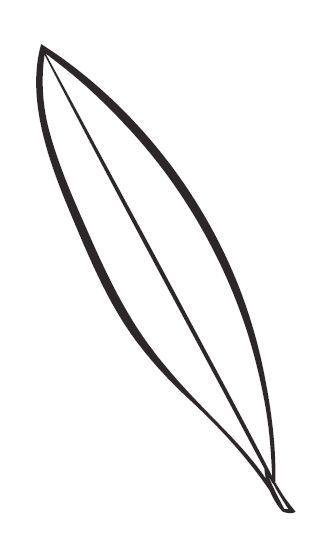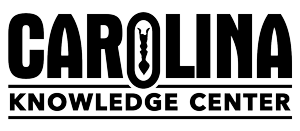Which Leaf Shape Can Hold the Most Butterfly Eggs?
A Carolina EssentialsTM Activity

Total Time: 30 minutes
Prep: 30 mins | Activity: 30 mins

Life Science
K-5
Elementary School
Overview
This is an elementary-level inquiry activity for students to investigate the relationship between leaf shape and the number of butterfly eggs that can be laid on a leaf. Students will build on their knowledge of the painted lady butterfly life cycle to assess which leaf shape can hold the most eggs. The activity promotes spatial thinking, proportion and scale, and measurement and may be conducted individually or in a small group. The teacher can assign every leaf shape to all students, one shape to a student, or all leaf shapes to a group of students depending on time.
Essential Question
Does the shape of a leaf influence the number of eggs butterflies can lay on the leaf?
Activity Objectives
- Determine the maximum number of eggs that can be laid on each leaf type.
- Determine the relationship between leaf shape and the maximum number of eggs laid.
Next Generation Science Standards* (NGSS)
SCIENCE & ENGINEERING PRACTICES
Asking Questions and Defining Problems
- K-2: Ask questions based on observations to find more information about the natural world.
- 3-5: Ask questions about what would happen if a variable is changed.
DISCIPLINARY CORE IDEA
LS1: From Molecules to Organisms: Structures and Processes
- Students examine the life cycle of the painted lady butterfly from larvae through egg laying for the next generation of butterflies.
CROSSCUTTING CONCEPTS
Scale, Proportion, and Quantity
- K-2: Students use relative scales to describe objects. They use standard units to measure length.
- 3-5: Students recognize natural objects and observable phenomena exist from the very small to the immensely large.
- Students use standard units to measure and describe physical quantities such as weight, time, temperature, and volume.
Materials
- Soft green copy paper
- 1 leaf template per student or group
- Hole Punch
- 100 eggs (paper circles) per student or group
- 1 metric ruler per student
Procedures
Use the hole punch to punch eggs from the soft green copy paper prior to the investigation. Each student or group needs about 100 eggs.
Laminate the paper prior to punching the holes so the eggs can be used multiple times.
STUDENT PROCEDURES
- Measure the length of each leaf. Use the line in the center of the leaf as a guide for the ruler.
- Write your answer in the blank
- Cover each leaf with the green butterfly eggs. The eggs should be close together, but they should not touch or overlap. Eggs cannot hang over a leaf.
- Count the number of eggs on each leaf.
- Write down the number of eggs on each leaf.
TEACHER PREPARATION AND TIPS
- Laminate the activity leaf template and green paper as whole sheets. Hole-punch the eggs. They are less likely to stick together when laminated. Leaf options:
- Cut out the leaves and give them to students
- Assign an individual leaf on the activity sheet
- Have every student use each leaf
Place eggs in an applesauce cup or in a resealable bag and reuse from year to year.
If it is the appropriate time of year, you may use real leaves. Make certain they are the same length.
If using real leaves, you may want to make white or yellow eggs so they show up on the leaf surface.
Showing students actual flowers adds interest. Daisies and asters are readily available.
Help students measure along the centerline of the leaf. All lengths should be the same. All measurements should be in centimeters.
Check for the placement of eggs. Students should not pile up eggs or have them overlap.
- As a math extension, ask students to add the number of eggs for each leaf type.
If appropriate, a class average for eggs per leaf type can be calculated.
If time permits, instruct students to place eggs on their leaf design. Hang up the leaves that have the highest egg count.
Take a nature walk and have students collect leaves. Examine the undersides for eggs. Collect leaves and determine if a leaf shape from nature matches a leaf shape that students drew.
Leaves




Analysis & Discussion
Were the lengths of the leaves alike or different?
Alike
Which leaf held the most eggs?
Answers may vary. The hollyhock should have the most area.
Which leaf held the fewest eggs?
Lily
Look carefully at the shapes of the leaves. If the lengths are the same, why can some leaf shapes hold more eggs?
Greater width
Why do you think it is beneficial for painted lady butterflies to lay eggs on aster, daisy, and hollyhock leaves?
Large surface area and food source
Why is it not beneficial for butterflies to lay eggs on lilies?
The lily leaf is narrow (less surface area).
Draw a leaf shape that could hold many butterfly or insect eggs.
Drawings may vary. The leaf should be broad, indicating a large surface area.
SHOP THE KIT
HELPFUL LINKS
VIEW MORE ESSENTIALS
*Next Generation Science Standards® is a registered trademark of Achieve. Neither Achieve nor the lead states and partners that developed the Next Generation Science Standards were involved in the production of, and do not endorse, these products.




